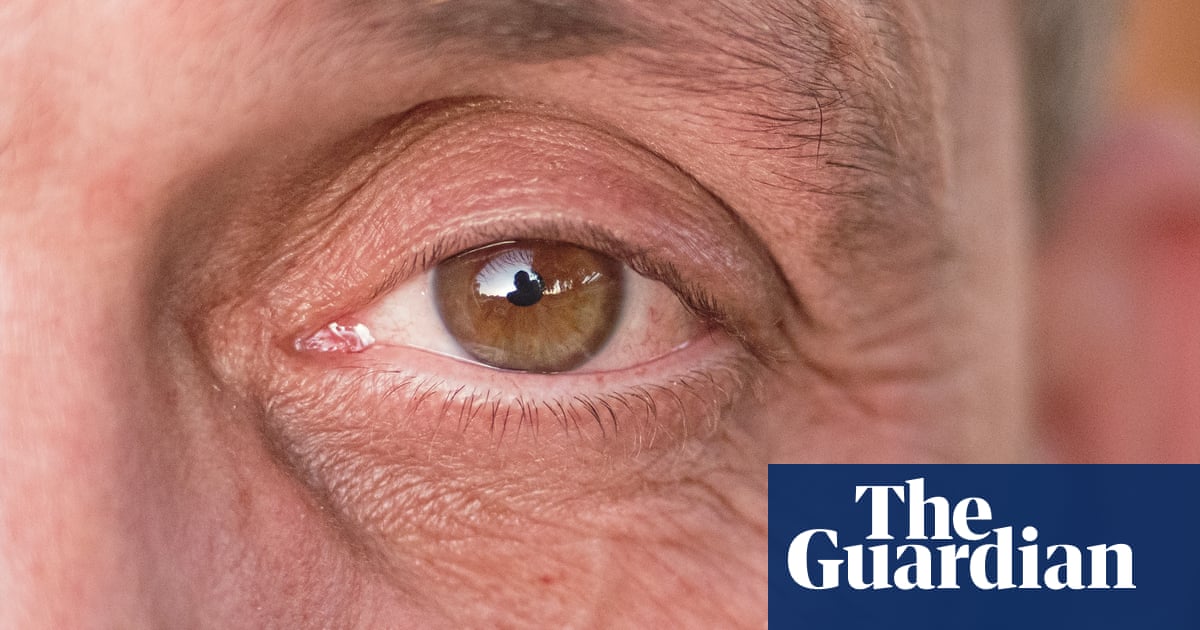The list of foods I should consider cutting out is long and daunting.
Meat, mushrooms, most nuts and seeds, milk products, soya beans and potatoes – all this would no doubt result in me losing weight, but weight loss is not what I’m investigating. These are the combined results of three commercial food sensitivity tests that are sold online and have surged in popularity in recent years.
There’s just one problem: I experience no discernible symptoms with any of these foods in my daily life, and among all of these items there is no single food that all three tests agreed on.
The popularity of commercial food sensitivity tests has exploded in recent years. Dieticians and allergists attribute this to a general increased interest and excitement around gut health, and the difficulty of getting a diagnosis for troublesome gut symptoms via the NHS.
Many people buy them in the hope of diagnosing intolerances like lactose and histamine sensitivity, which are often caused by people not producing enough of certain enzymes that break down those substances.
But the promise of a diagnosis from a quick and easy test collides with the reality of how intolerances are actually identified.
“The reality is that the only way to really find out if you’ve got a food intolerance is exclusion and reintroduction of specific items from your diet, which is hard work,” said Prof Adam Fox, who specialises in paediatric allergy at King’s College London and is a spokesperson for the British Society for Allergy and Clinical Immunology. “It is such an attractive idea that you can just book a test, and it will tell you. But the dangers are over and underdiagnosis, and both of those have potential risks.”
Various intolerance or sensitivity tests are available, but the most common are immunoglobulin G (IgG) blood tests, which analyse a small sample of self-collected blood for antibodies (immunoglobulins) to specific foods; and bioresonance testing, which claims to detect “energy fields” from samples of hair and compares these to food-related energy fields.
Although these tests are performed by accredited labs – meaning their equipment and methodologies produce consistent results – medical experts say the tests themselves are unscientific and unproven and that taking their recommendations at face value could have serious consequences for people’s health.

Dr Sammie Gill, a specialist gastroenterology dietitian, and spokesperson for the British Dietetic Association, said: “Not only are people spending their money on expensive tests that are completely invalid, but they often exacerbate stress, anxiety and development of disordered eating.”
Some home tests also detect immunoglobulin E (IgE) in blood – a validated scientific test for allergies, but one that experts say should only be interpreted in the context of someone’s clinical history.
Fox said: “Using an allergy test on its own is a waste of time and could be dangerous because they can diagnose people with allergies they don’t have or tell them they’re not allergic to something when they are.”
Sensitivities are also common. A reaction to gluten, a protein found in wheat, rye and barley may be flagged by a test – but isn’t the same thing as celiac disease, an autoimmune disease; or wheat allergy, where the immune system overreacts to proteins in wheat.
Curious about what such tests might say about me, I ordered IgG and IgG/E blood tests from Supply Life and Cerascreen (costing £207 and £109.90 respectively), plus a bioresonance hair test from Check My Body Health (costing £28).
Together, these tests identified a list of 80 foods that I am “highly reactive” to, and a further 31 that I am slightly or moderately reactive to. However, there was no single food item that all three tests agreed on. And in many cases, items given a red flag by one test were given a green flag by another.
For instance, a blood sample test from Cerascreen based on tests for IgG4 antibodies suggested that I showed a strong reaction to almonds, rye, sesame, spelt, kiwi and turkey, while a test based on a strand of my hair from Check My Body Health found no reactivity to any of these.
The only foods that both Cerascreen and Supply Life agreed that I might be sensitive to using their IgG tests, were almonds, potatoes and hazelnuts – all of which I eat regularly without any issues.
Gill said: “All three tests report an alarmingly high number of foods that should be avoided or cautioned. A long-term restrictive diet deprives your body of essential nutrients and not only increases the risk of nutritional deficiencies, but chronic health conditions such as osteoporosis or impaired immune function leading to an increased risk of illness and infection.
“The complete lack of consistency between the three different tests, alongside the fact you report having no issues consuming foods labelled ‘red’ or ‘orange’ simply reinforces the fact that these tests are nonsensical.”
Cerascreen’s tests also identified nine items to which I showed IgE sensitisation, a crucial step in the development of allergic reactions. This included strong sensitisation to peanuts and hazelnuts, even though I regularly eat these without any symptoms.
After studying these results, Fox correctly guessed that I suffer from hay fever. “This means that many foods, such as peanut and hazelnut will come up high, because they contain proteins very similar to pollen,” he said.
“This can give confusing false positives: you are clearly OK with peanut as you eat it regularly with no ill effect, but this nicely illustrates how using the test without the correct clinical context can result in very inappropriate overdiagnosis. Importantly in younger children, avoiding allergenic foods can increase the risk of allergy developing, so these tests could actually promote kids getting allergies.”
Although Cerascreen’s report clarified that “if you do not experience any symptoms when eating the food, you should not remove it from your diet”, and Supply Life offered me the opportunity to discuss my results with a dietician, stressing that “any change in diet needs to be carefully managed”, Check My Body Health advised removing all high and moderate reactivity items from my daily diet for six to eight weeks, then reintroducing them one by one while closely monitoring for symptoms.

However, it stated that bioresonance therapy is categorised as a complementary and alternative medicine, and that “tests and related information provided do not make a medical diagnosis nor is it intended to be a substitute for professional medical advice, diagnosis or treatment”.
Dr Marc Dangers, the head of product and lab at Cerascreen said it was crucial to understand that differing methodologies and the specific antibodies or markers each test measures can indeed lead to varied results, and acknowledged “ongoing scientific discussion surrounding the clinical significance of IgG4 antibodies in diagnosing food intolerances”.
“It is important to emphasise that our tests offer an initial indication and are not intended as a definitive diagnosis,” Dangers said. “We strongly encourage individuals to interpret our findings in conjunction with their personal experiences and any symptoms they may be experiencing. Dietary modifications should only be contemplated under the guidance of a qualified healthcare professional, particularly when no symptoms are apparent after consuming the identified foods.”
He added that Cerascreen consistently advises individuals with positive IgE results to consult with an allergist for accurate diagnosis and appropriate management.
Supply Life clarified that it measured all four types of IgG to show whether the immune system was mounting any response to food, while IgG4 tests only measured an antibody that arrived later on in the inflammatory process. Check My Body Health didn’t respond when approached for comment.
Despite these criticisms, customer testimonials on the companies’ websites suggest that at least some people have been helped by these tests. Supply Life pointed to a recent survey of 1,586 customers, which found that 86% reported benefits to their symptoms as a result of doing the tests, rising to 94% who followed their dietary reccommendations for six weeks or more.
Gill said that this is possible. “If you’re over-restricting and cutting out multiple foods, the chances are you might be unknowingly removing the one or two foods that are actually causing you symptoms. If you are eating less, there is also a lower chance of triggering gut symptoms, and you might feel better in the short-term,” she said.
A placebo effect may also contribute to a temporary improvement in people’s symptoms. “Imagine trying to cut out milk, egg etc. It would be very hard work, and you would likely briefly feel better, simply because you feel you are taking control and likely generally looking after yourself better,” said Fox. “However, this soon passes and there would be no health gain for a lot of effort and a risk to the nutritional quality of your diet.”
Given that I experience no food-related symptoms, I won’t be taking up this advice and I will continue to spoon peanut butter on my breakfast with abandon. Gill stresses that food should be a source of enjoyment: “Being told that you must cut out multiple different foods removes the pleasure from eating.” I agree.
What is the difference between a food allergy, a sensitivity and an intolerance?
Although these terms are sometimes used interchangeably there are key differences between food allergies and intolerances (also known as sensitivities), including how they are managed.
Food allergies involve the immune system overreacting to a harmless substance, and may affect the whole body or just a small area. There are two main types: IgE-mediated food allergies are the most common, and typically occur within seconds or minutes of eating. Symptoms range from mild to life-threatening, and could include a rash and/or itching of the skin; swelling of the lips, tongue or throat; wheezing and vomiting. Symptoms of non-IgE-mediated food allergies may take hours or days to develop, and could include abdominal pain, vomiting and diarrhoea.
Food intolerances don’t involve the immune system, and are caused by difficulties digesting certain foods. Symptoms are usually localised to the gut, and although unpleasant, are not life-threatening. These typically include abdominal pain, bloating, excess wind and diarrhoea or constipation. Also, whereas food allergy symptoms can be triggered with very small amounts of the substance, people with a food intolerance may be able to eat small quantities without any gut-related issues.
Are there any clinically validated tests for detecting these conditions?
IgE-mediated food allergies can be detected using skin prick tests, where a small amount of allergen is introduced into the skin and observed for a reaction, or blood tests that look for IgE antibodies specific to certain foods.
Prof Adam Fox said: “For most food allergies, the higher the number that comes back, the more likely it is that you’re allergic – but that doesn’t mean that if the test is negative, you’re not allergic, or if the number is very high, that you are allergic,” which means they should be interpreted alongside a patient’s clinical history. “The most reliable test is what happens when you eat the substance – so what is the clinical context?” he said.
There are no reliable clinical tests for non-IgE-mediated allergies or food intolerances, apart from lactose intolerance, a condition where the body struggles to digest a sugar found in milk and dairy products. Other intolerances and non-IgE allergies are typically diagnosed by taking a detailed medical history, and then carefully eliminating and reintroducing the suspected food, under the guidance of a healthcare professional.
What about IgG blood tests and hair resonance tests?
IgG antibodies are produced by the immune system in response to foreign substances like food antigens. However, many medical societies advise against using IgG tests to diagnose food intolerance. “IgG antibodies are produced in response to foods you eat on a regular basis – they simply indicate repeated food exposure,” said Dr Sammie Gill. “In summary, if you eat food, you’ll likely produce IgG. It’s completely normal.”
Raised IgG to certain foods may even be an indicator that people can tolerate eating them. Fox said: “They are typically raised to foods you eat regularly without a problem”.
Bioresonance testing involves analysing the electromagnetic frequencies emitted by an individual’s hair sample and comparing them to frequencies emitted by various substances such as foods, minerals, metals and gut bacteria. Companies running these tests claim they are rooted in the principles of quantum physics, but many physicists disagree.
“Quantum science is complex and subtle. It tells us that the world often works in counter-intuitive ways – and we can use those properties to develop powerful technology. But we need to be really careful about companies using the word ‘quantum’ in inappropriate ways to make their product sound mysterious and exciting,” said Louis Barson, director of science, innovation and skills at the UK’s Institute of Physics. “That’s part of why work on quantum standards and measurement is so important – we need to be able to differentiate between things that ‘are’ and ‘are not’ quantum.”
“It’s pure quackery,” said Fox.
What if you suspect a potential food allergy or intolerance?
Gill said: “If you think you might be allergic to a particular food, skip the commercial kits and book an appointment with your GP, who can refer you to a qualified allergist or immunologist. They can arrange any relevant testing and take a full clinical history to support with an accurate diagnosis. It’s worth keeping a food and symptom diary for seven to 14 days in the run-up to your appointment.”
Fox said: “For food intolerances, some might find that their GP is less experienced or less able to help them, but a registered dietitian is super helpful here. They can support you by doing careful exclusion diets and reintroduction. They can also give you a reality check as to whether the symptoms you’re describing are likely to be related to foods that you’re eating.”

 4 hours ago
6
4 hours ago
6













































